
A 1778 engraving of the castle from the southeast from "The Copper Plate Magazine"

The castle from "Morris's Views of Seats," circa 1875.
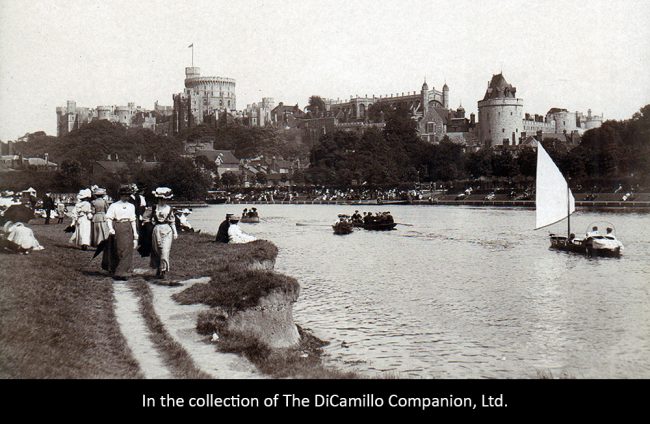
The castle from the Thames from a circa 1900 postcard
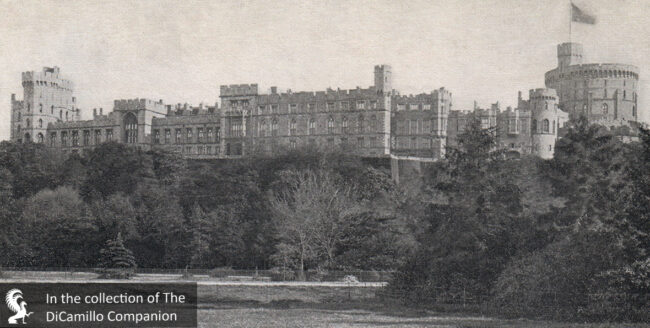
The castle from a 1914 photograph
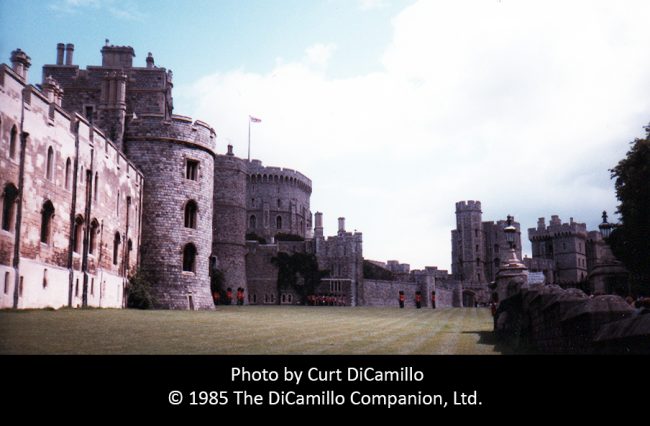



The Round Tower

The Round Tower in the evening light
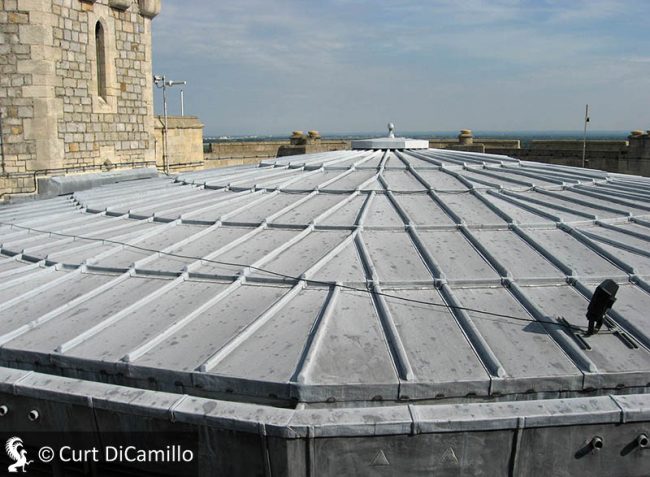
The roof of the Round Tower
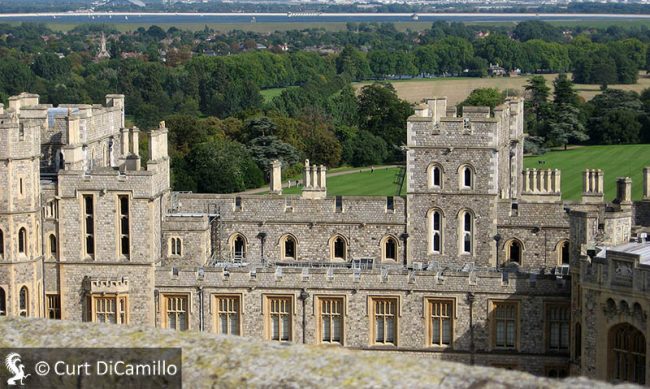
The castle from the roof
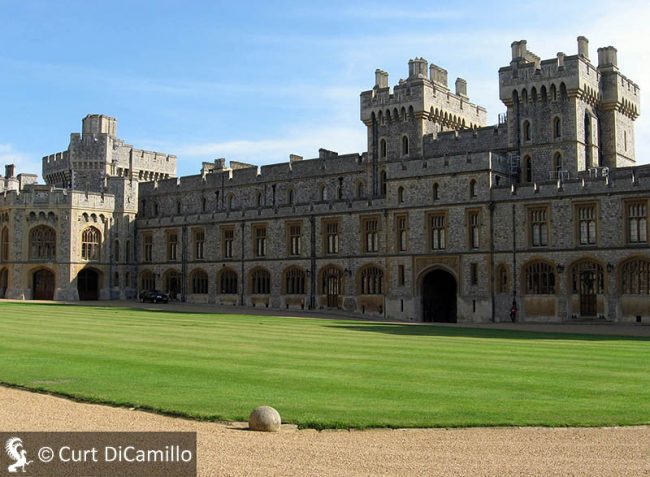
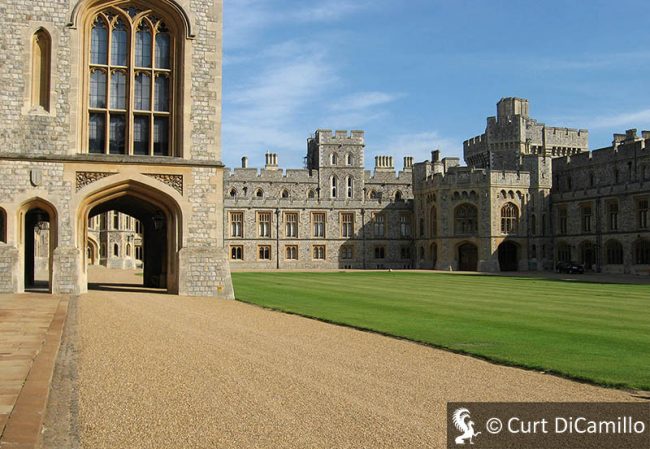
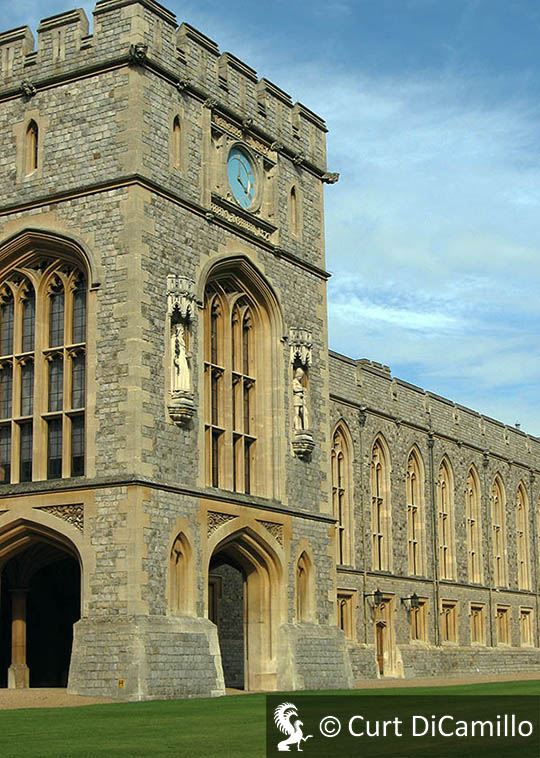
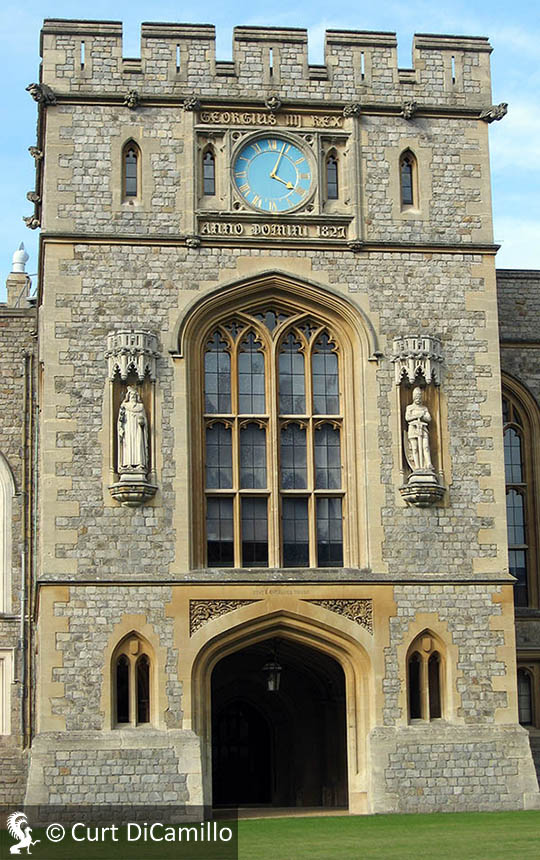


The east facade
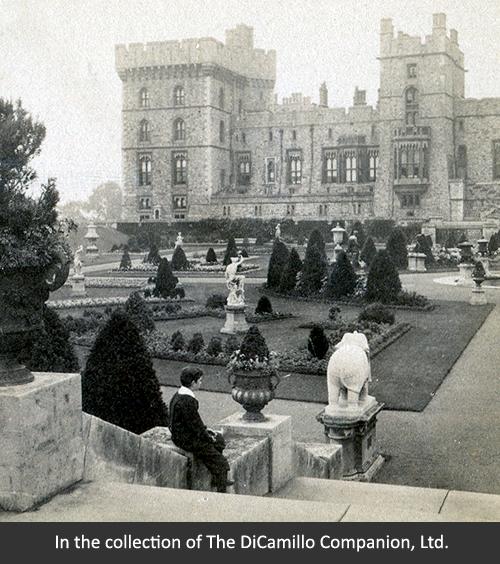
A late 19th century Stereoview card of the east facade of the castle from the Queen's Private Grounds (East Terrace Garden).

The East Terrace Garden
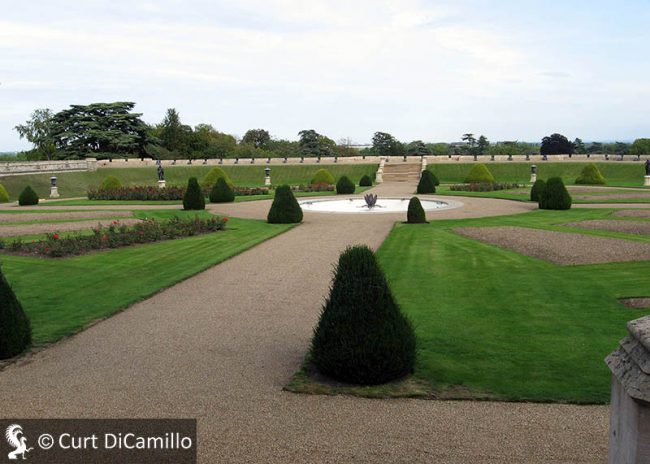
The East Terrace Garden

19th century copy of the Warwick Vase in the East Terrace Garden

The ancient Roman Warwick Vase (today in the Burrell Collection, Glasgow), a 19th century copy of which is in the garden at Windsor.
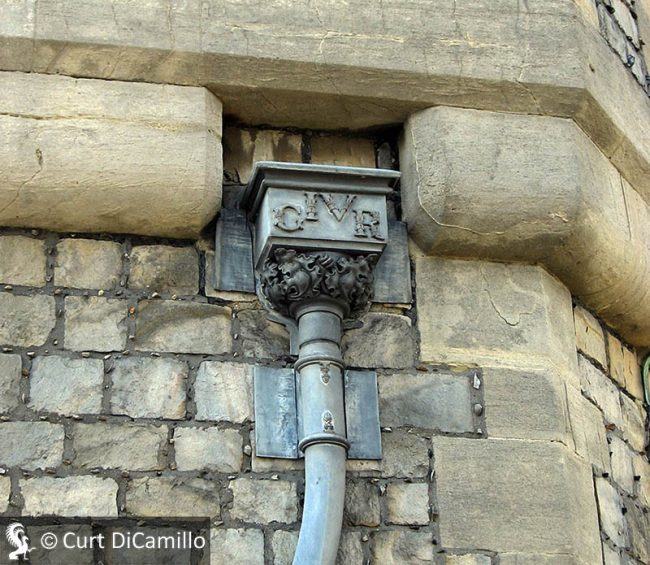
An early 19th century downspout with the mark of George IV
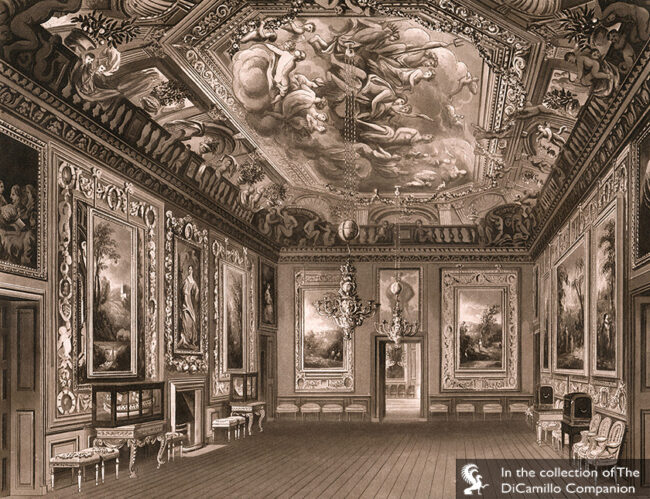
The Queen's Drawing Room from an 1819 acquatint. Visible are two of the five solid Britannia silver chandeliers designed by William Kent for George II, one of which is today in the collection of the Museum of Fine Arts, Boston, and two of which are in the collection of Anglesey Abbey, Cambridgeshire.

The two William Kent chandeliers that are today in the library of Anglesey Abbey, Cambridgeshire.
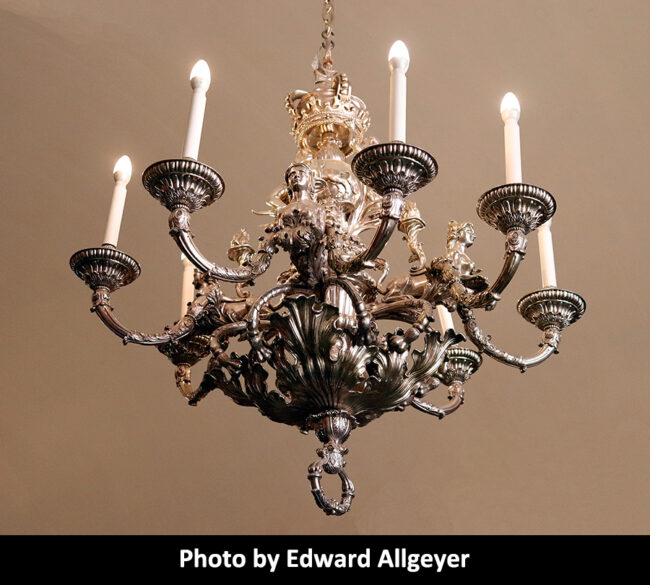
One of the William Kent chandeliers formerly at Windsor, today in the collection of Anglesey Abbey, Cambridgeshire.
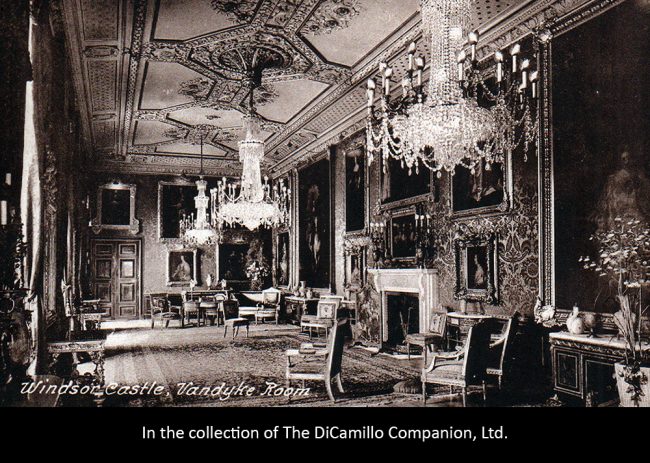
The Van Dyck Room from a circa 1895 postcard
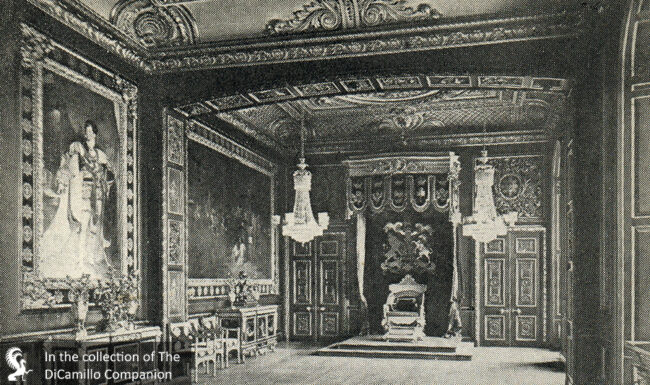
The Throne Room from a 1914 photo
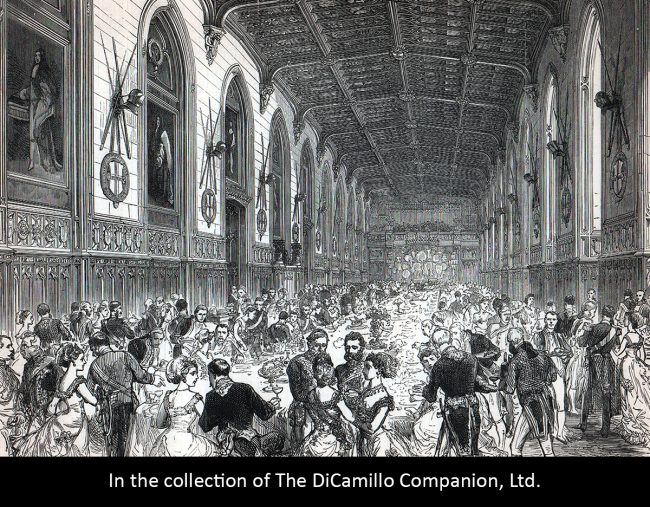
St. George's Hall set for the wedding lunch of the Duke of Connaught from the Mar 15, 1879 issue of "The Illustrated London News"

The Waterloo Chamber from an 1848 lithograph by Joseph Nash from "Views of the Interior and Exterior of Windsor Castle."
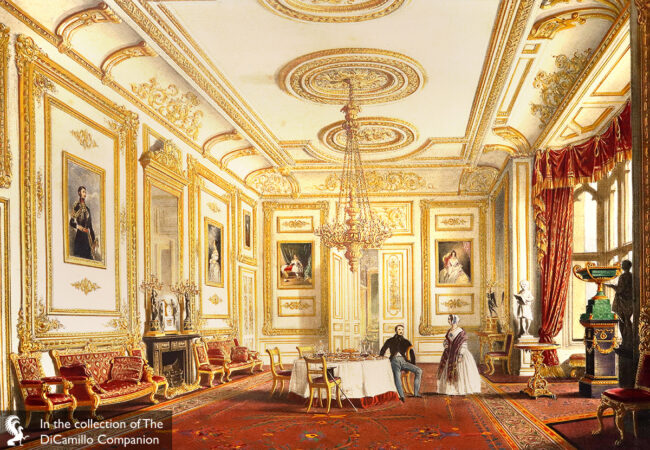
The White Drawing Room from an 1848 lithograph by Joseph Nash from "Views of the Interior and Exterior of Windsor Castle."

The library from an 1848 lithograph by Joseph Nash from "Views of the Interior and Exterior of Windsor Castle." To the right is probably Queen Victoria, Prince Albert, and John Glover, the royal librarian.
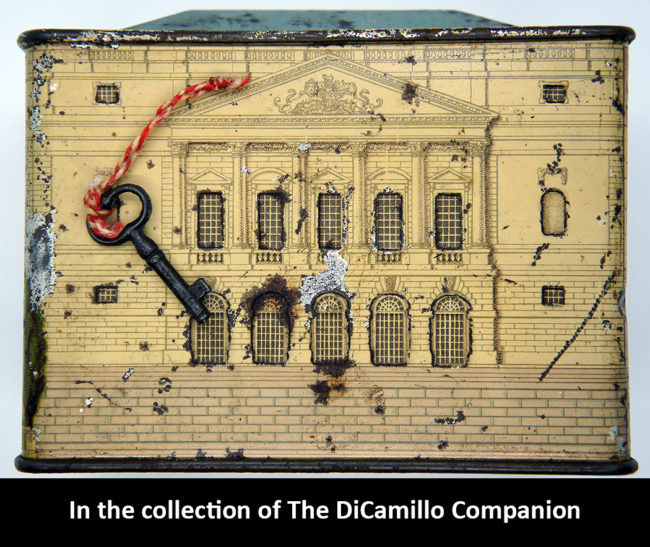
The front facade, with key made by Chubb, of a circa 1925 tin bank, sold by Cauldon Potteries, that depicts Queen Mary's Dolls' House. The actual dolls' house is today at Windsor Castle.
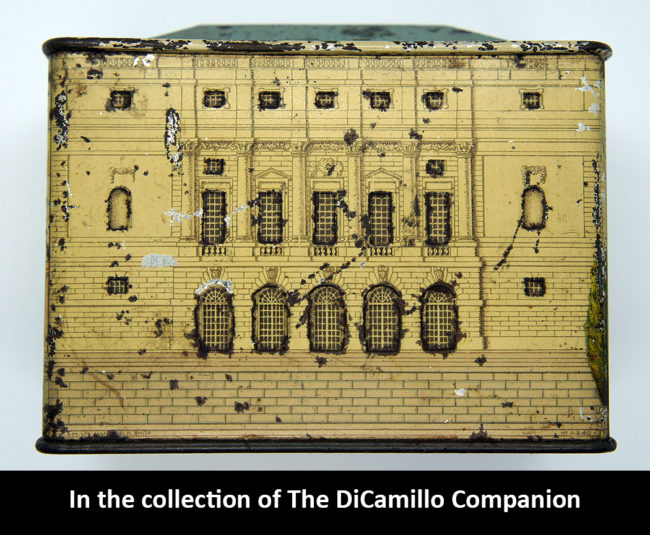
The rear facade of a circa 1925 tin bank, sold by Cauldon Potteries, that depicts Queen Mary's Dolls' House. The actual dolls' house is today at Windsor Castle.

A side facade, showing the garage, of a circa 1925 tin bank, sold by Cauldon Potteries, that depicts Queen Mary's Dolls' House. The actual dolls' house is today at Windsor Castle.
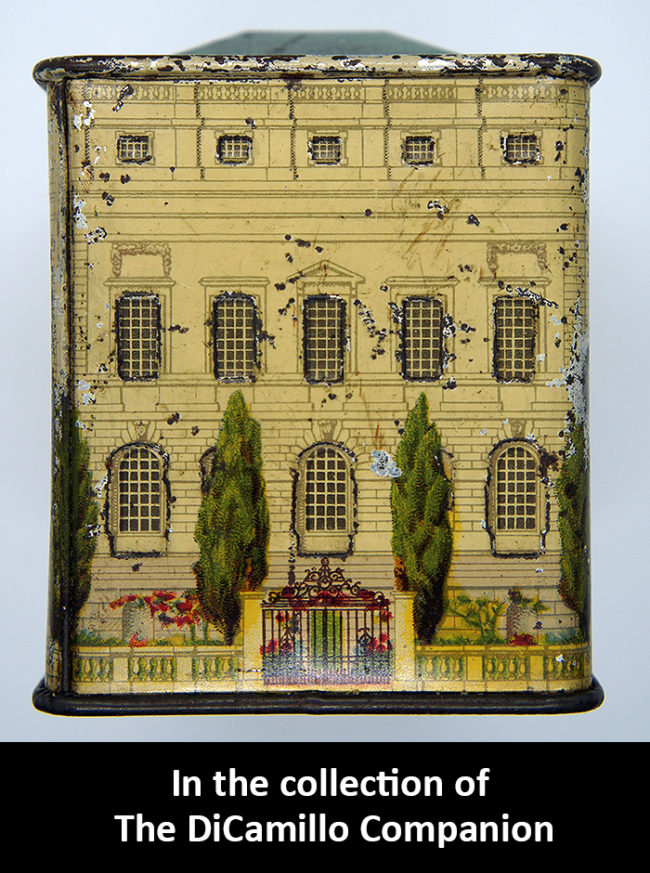
A side facade of a circa 1925 tin bank, sold by Cauldon Potteries, that depicts Queen Mary's Dolls' House. The actual dolls' house is today at Windsor Castle.

The roof, showing where coins were deposited, of a circa 1925 tin bank, sold by Cauldon Potteries, that depicts Queen Mary's Dolls' House. The actual dolls' house is today at Windsor Castle.
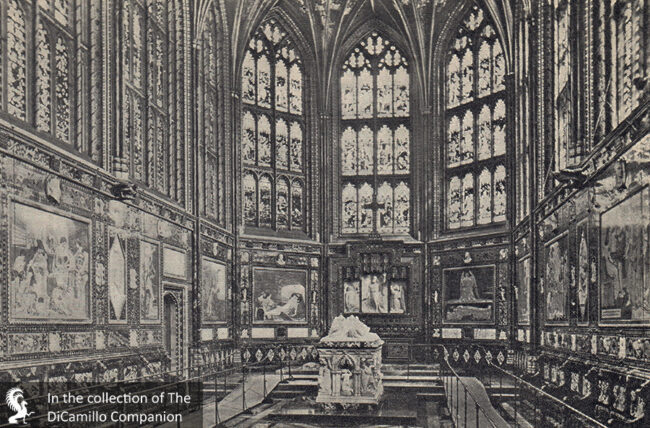
The Albert Chapel from a 1914 photo
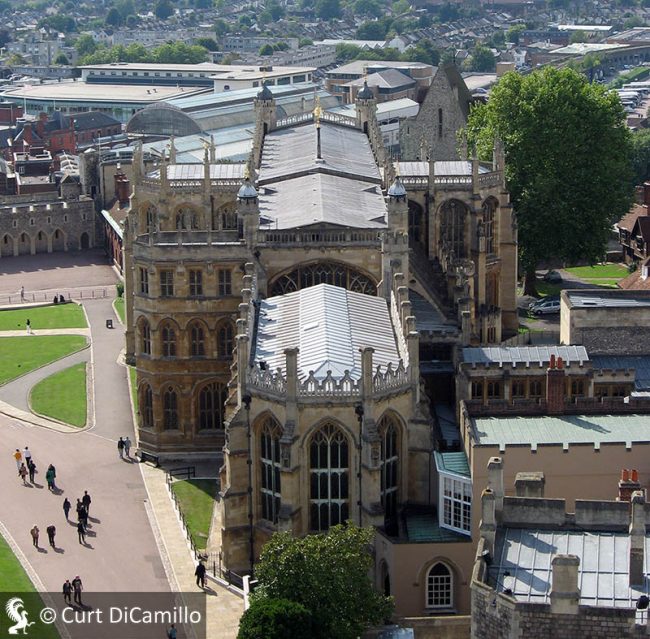
St. George's Chapel from the roof of Windsor Castle

St. George's Chapel

St. George's Chapel

A 1778 engraving of St. George's Chapel from "The Copper Plate Magazine"

St. George's Chapel
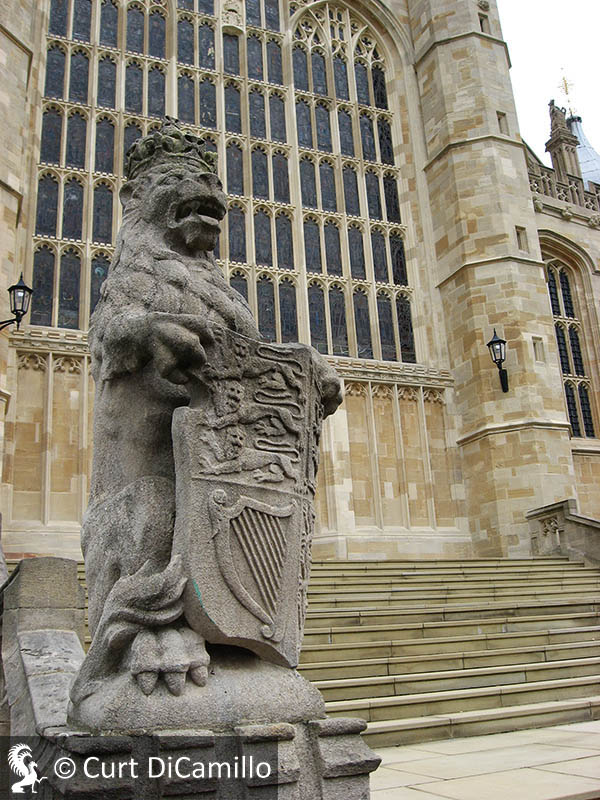
St. George's Chapel
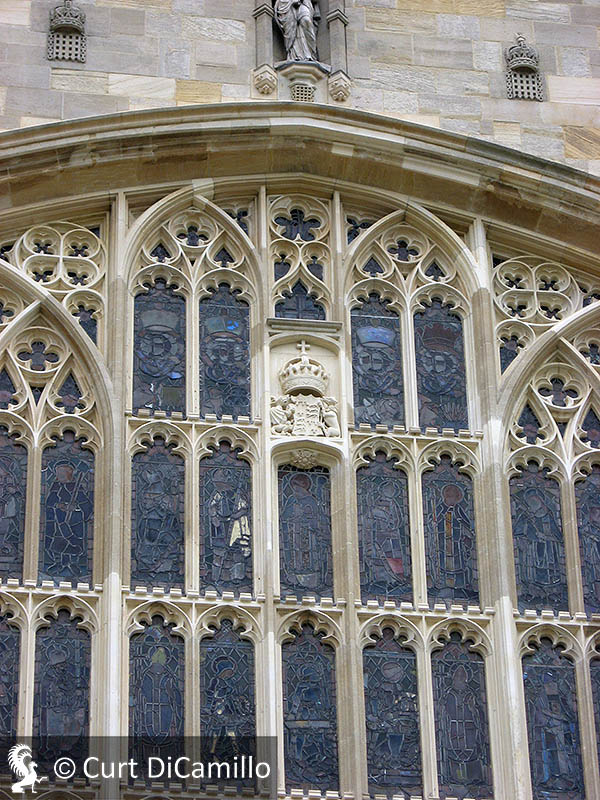
St. George's Chapel
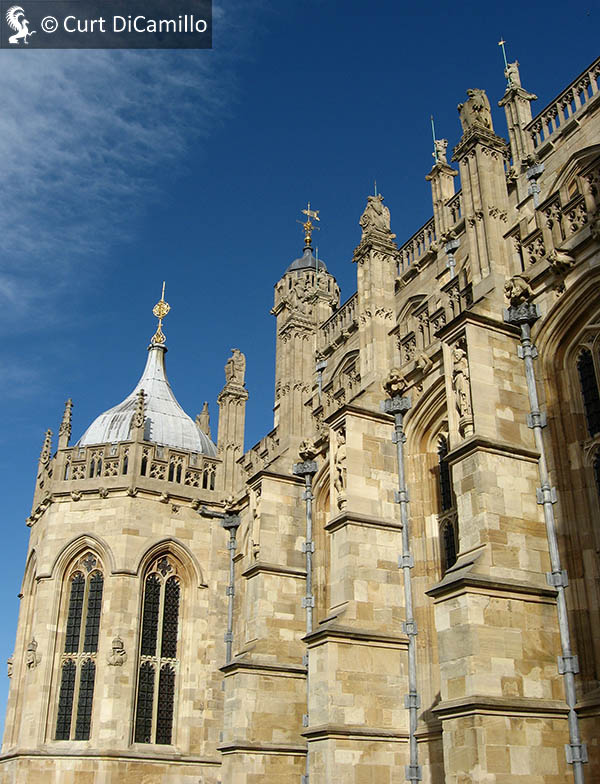
St. George's Chapel
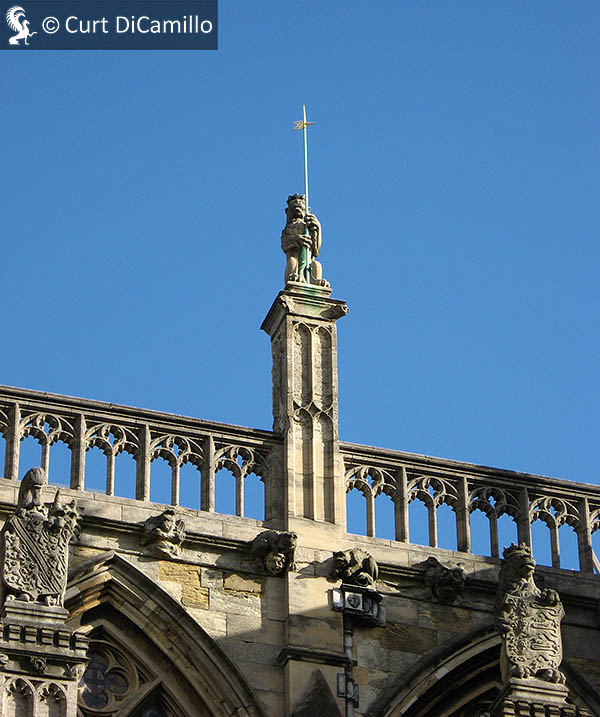
St. George's Chapel
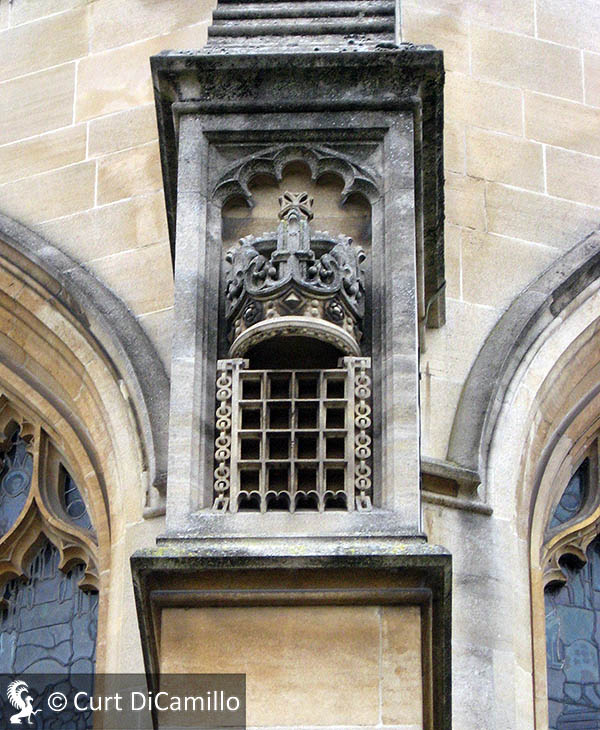
Carving of portcullis with crown on exterior wall of St. George's Chapel

Carving of portcullis with dragon and greyhound supporters, and the Tudor rose above, on exterior wall of St. George's Chapel.
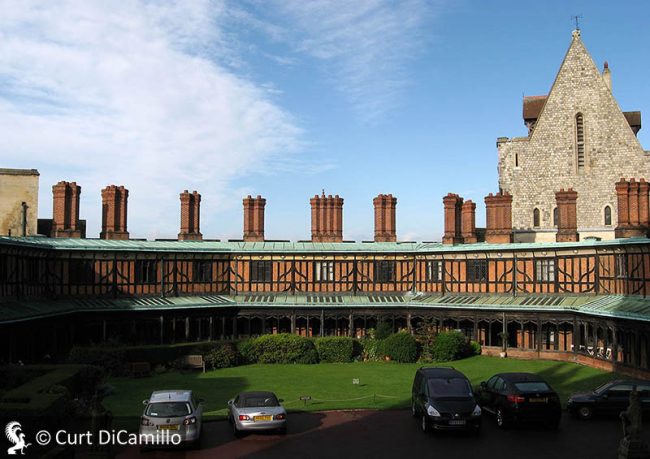
The Horseshoe Cloister, St. George's Chapel.

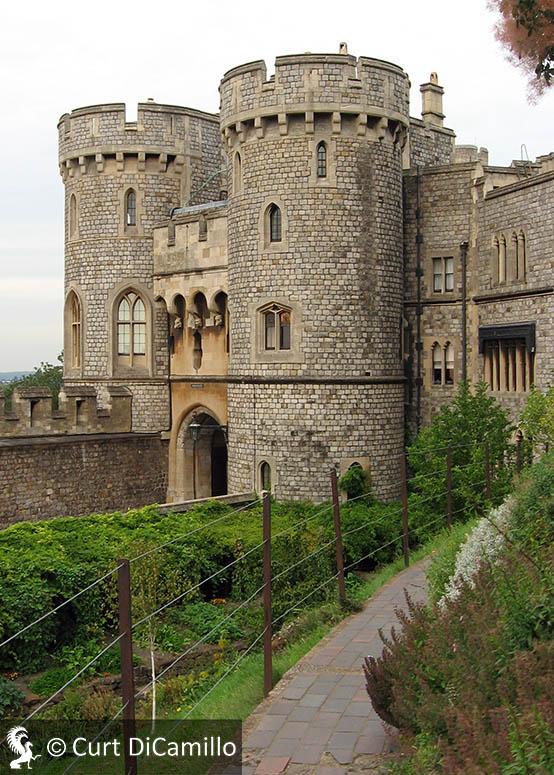
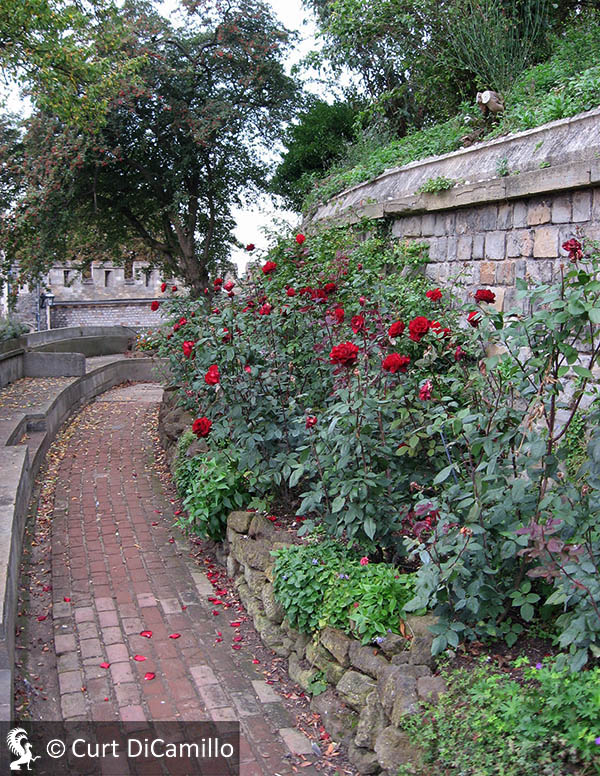



Frogmore Mausoleum from the roof of Windsor Castle
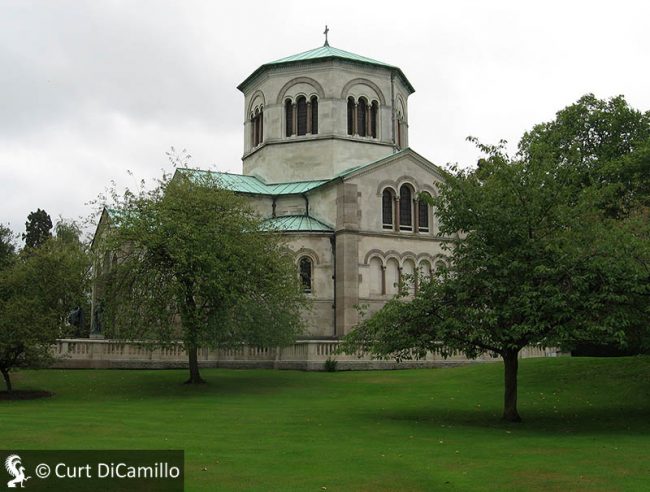
The Royal Mausoleum at Frogmore, Windsor Great Park.
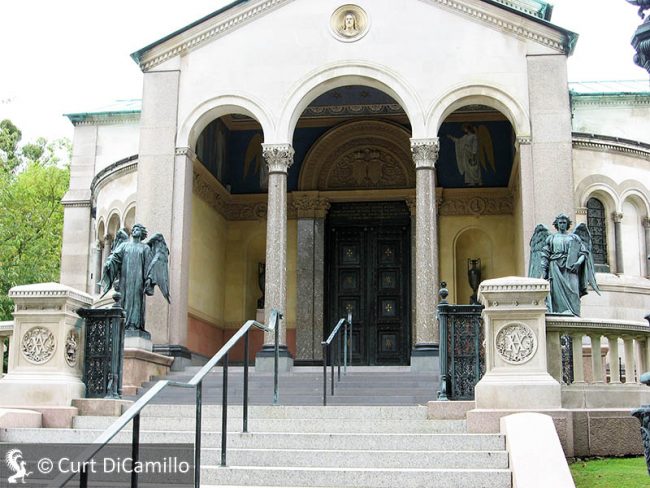
The entrance to the Royal Mausoleum at Frogmore, Windsor Great Park.

Detail over doorway to the Royal Mausoleum at Frogmore, Windsor Great Park.
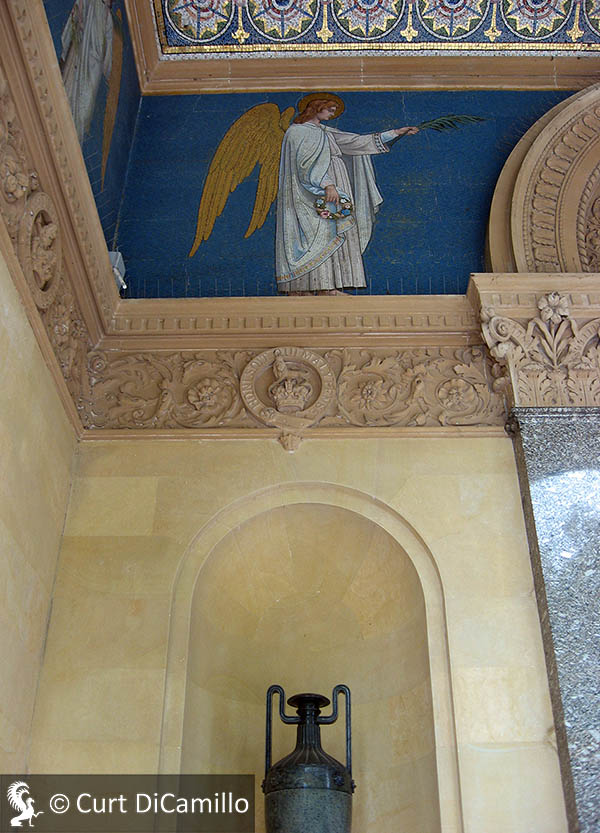
Entrance porch to the Royal Mausoleum at Frogmore, Windsor Great Park.

Frogmore House, Windsor Great Park.

The Gothic Folly in the grounds of Frogmore House, Windsor Great Park.
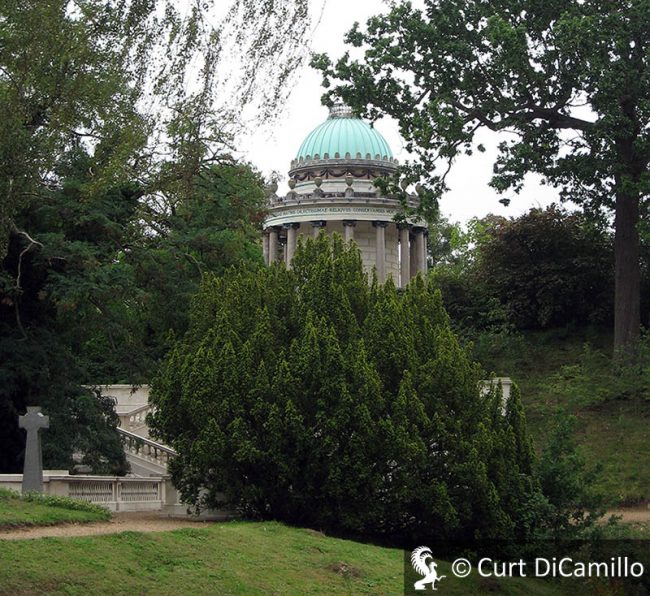
The Duchess of Kent's Mausoleum, Frogmore, Windsor Great Park.

The Duchess of Kent's Mausoleum, Frogmore, Windsor Great Park.
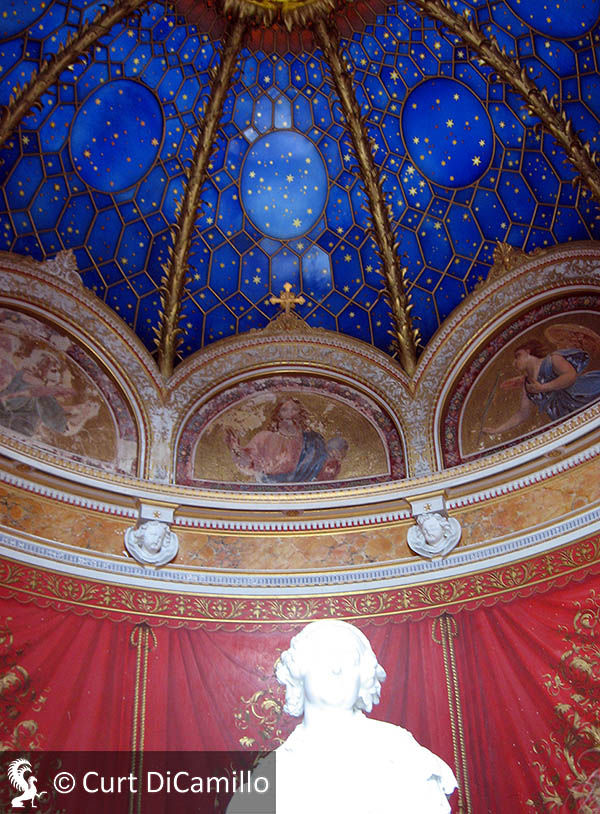
Interior of the Duchess of Kent's Mausoleum, Frogmore, Windsor Great Park.

Adelaide Cottage in Windsor Great Park
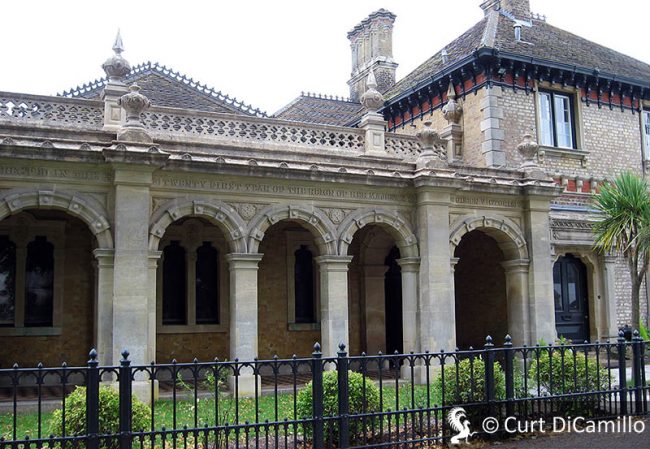
The dairy, Windsor Great Park.

The dairy, Windsor Great Park.

The ruins of Virginia Water from a hand-colored 19th century engraving
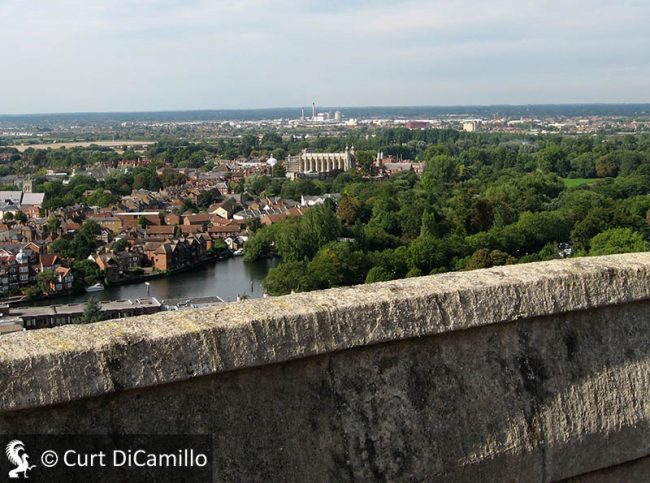
Eton Chapel (middle background) from the roof of Windsor Castle
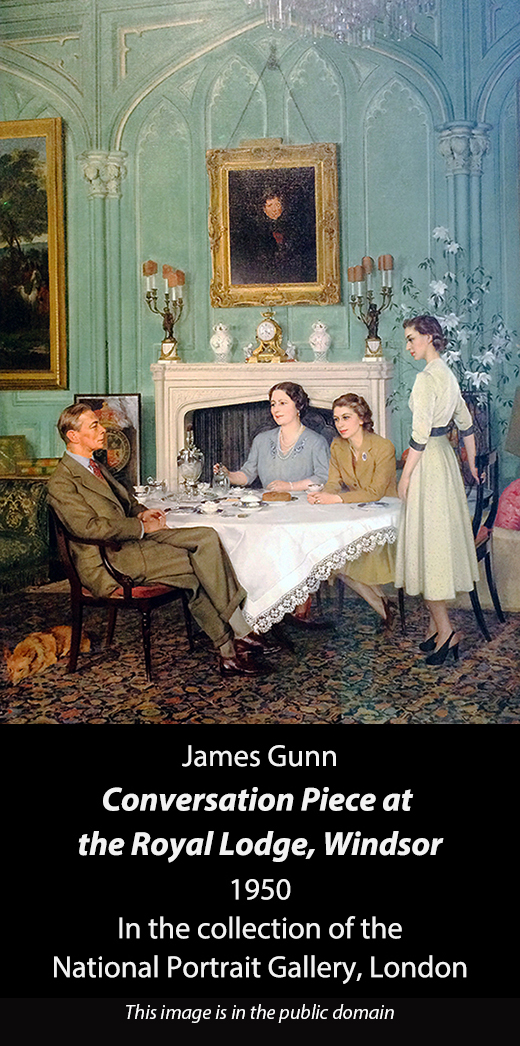
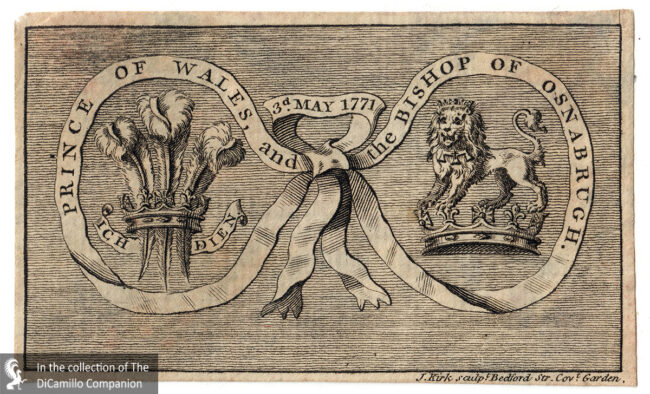
A 1771 engraved joint bookplate of the Prince of Wales (later George IV) and his brother, Frederick, Bishop of Osnabrugh, later Duke of York.
House & Family History: Windsor Castle is the largest inhabited castle in the world and the oldest in continuous occupation. The enormous castle was begun by William the Conqueror on a typical Norman motte and bailey plan. William chose a commanding spot for his fortress, on a 100-foot, cliff overlooking the River Thames. He built up a mound of earth and erected a wooden palisade atop the mound, or motte. Though the castle has been expanded and enlarged numerous times over the subsequent centuries, the basic layout of William's plan can still be seen. Henry I replaced the wooden structure with a keep of stone, using stone quarried at Totternhoe in Bedfordshire. Henry II rebuilt the defenses and added a second bailey in 1175, and at the same time provided for more comfortable accommodation. Henry was fond of Windsor, and planted an herb garden and a vineyard here. It was also Henry who built the first royal apartments, the foundations of which can still be seen in the basement of the current apartments. The castle withstood two sieges in the early Medieval period. Prince John attempted to take the throne in 1194, when his brother, King Richard I, was out of the country; nobles who remained loyal to the king tried and failed to wrest control of the castle from John. Later, when John was legitimately king, Windsor was unsuccessfully besieged again by the nobles as part of the hostilities which culminated in the signing of Magna Carta. Though Henry III contributed some minor building, the next major builder was Edward III. In the years following the Black Death in 1349 Edward lavished over £50,000 on Windsor Castle, making it the single largest crown building project of the Middle Ages. Edward was driven by a desire to match the French crown in architectural splendor. From that time on Windsor has stood as one of the principle residences of the monarch. Later monarchs added to the complex of buildings we now know as Windsor Castle. Henry VIII built the great entry gate which bears his name. The last major building took place under George IV, when the tower was raised—at the cost of £1 million—to make it the highest of any castle tower in the country and Sir Jeffry Wyatville, circa 1800 to 1830, rebuilt the interiors. The ceiling and chimneypiece designed by Robert Adam for Buckingham House now stand in the Queen's Presence Chamber at Windsor. Windsor Castle, along with Buckingham Palace and the Palace of Holyroodhouse, are used as the official lodgings of the monarch. The monarch uses these buildings as both home and office. When the king is in residence the royal standard flies atop the Round Tower. At other times the Union Jack is flown. (This history kindly provided by Britain Express, The UK travel and heritage guide).
Collections: A full-size bronze replica of the Warwick Vase (one of two copies produced) by the firm of Rundell, Bridge and Rundell was purchased by George IV in 1821 and is today at Windsor Castle. The Borghese-Windsor Cabinet (circa 1620), originally made for Pope Paul V and later acquired by George IV (it was sold from the Royal Collection in 1959), set a new record for a piece of Roman furniture when it was sold by Sotheby's in 2016 for €2.5 million. The 17th century Italian cabinet, decorated with gilded bronze and silver statuettes and pietre dure, was acquired by the Getty Museum.
Garden & Outbuildings: The castle sits within the 5,000-acre Windsor Great Park. Virginia Water Lake, in the south of Windsor Great Park, is an 18th century (circa 1740) man-made lake. Around the lake is a 100-foot-high Canadian totem pole commemorating the centenary of British Columbia and a collection of ornamental Roman ruins installed at Virginia Water in 1826. Many of the stones that were used to create the ruins came from the site of Leptis Magna, a Roman city on the shores of the Mediterranean near Tripoli, in present day Libya (see 19th century engraving in "Images" section).
Chapel & Church: The grounds contain St. George's Chapel, one of the most beautiful examples of Medieval church architecture in England and home of the Order of the Garter. Every June an official gathering of the order is held at Windsor Castle (at that time any vacancies are filled with new members). The monarch and royal members of the order attend an official luncheon at the Waterloo Chamber, after which they walk in procession to a service at the chapel. St. George's Chapel was begun in 1475 by Edward IV and finished 50 years later. Within the chapel are the tombs of 11 monarchs, including Edward IV, Charles I, George V and Queen Mary, George VI, and Elizabeth II. Also buried here is Henry VIII, who lies beside his favorite wife, Jane Seymour. Behind St George's Chapel is the 13th century Albert Chapel, rebuilt by Queen Victoria between 1863 and 1873 by George Gilbert Scott in memory of her husband and consort, Prince Albert. The Prince Consort is represented by a cenotaph (he is interred at Frogmore Mausoleum, though his body was interred here until Frogmore was completed). The main focus of the chapel today is the tomb of the Duke of Clarence (eldest son of the Prince of Wales, later Edward VII), who reposes in state on a sarcophagus of Mexican onyx. His head and hands are carved in white marble, his uniform in bronze with brass facings. The lining of his garter cloak is aluminum. At his head an angel holds aloft the crown of eternal glory, while at his feet a little angel weeps over a broken wedding wreath (the duke died two months after becoming engaged to Mary of Teck, who later became the wife of the duke's brother, the Duke of York, later George V). Queen Victoria did not follow the tradition of British monarchs in the subject of her final resting place, almost all of whom are interred in ancient churches and cathedrals with royal associations. Victoria chose to build a tomb-house in a private garden, an idea that came from Germany, the land of Victoria's mother and husband. The first member of the family to build a mausoleum was Victoria's uncle, Leopold of Saxe-Coburg, who erected a small Gothic mausoleum at Claremont to the memory of his wife, Princess Charlotte. It was while visiting Claremont tin 1843 that Victoria and Albert first considered the idea of building a mausoleum for themselves. The Frogmore Mausoleum resembles the Coburg Mausoleum, built in 1844 by Prince Albert for his father, Duke Ernest I of Saxe-Coburg. Victoria chose a design based on 13th century Italian precedents with interior sculpture and painting in the style of Raphael, who Prince Albert regarded as the greatest artist of all time. The Chapel Royal at Windsor was created by Charles II. At the Restoration he created one of the most spectacular Restoration interiors in Britain, with paintings by Antonio Verrio adorning the walls, including his Last Supper. The Chapel Royal did not survive the remodeling of Windsor that occurred in the early 19th century.
Architect: Jeffry Wyatville (Wyattville) (Wyatt)
Date: 1824-40Architect: Edward Blore
Date: 1840-47
Title: Warwick Vase, The
Author: Marks, Richard; Blench, Brian J.R.
Year Published: 1979
Reference: pg. 21
Publisher: Glasgow: Glasgow Museums and Art Galleries
ISBN: 0902752073
Book Type: Light Softback
Title: V&A Guide to Period Styles: 400 Years of British Art and Design, The
Author: Jackson, Anna; Hinton, Morna
Year Published: 2002
Reference: pg. 30
Publisher: London: V&A Publications
ISBN: 0810965909
Book Type: Hardback
Title: Biographical Dictionary of British Architects, 1600-1840, A - SOFTBACK
Author: Colvin, Howard
Year Published: 1995
Publisher: New Haven: Yale University Press
ISBN: 0300072074
Book Type: Softback
House Listed: Grade I
Park Listed: Grade I
Current Seat / Home of: King Charles III
Past Seat / Home of: King George I, 1714-27; King George II, 1727-60; King George III, 1760-1820; King George IV, 1820-30; King William IV, 1830-37; Hanover family here from 1714 until 1837. Queen Victoria, 1837-1901; King Edward VII, 1901-10; King George V, 1910-17; Saxe-Coburg-Gotha family here from 1837 until 1917, when George V changed the family name to Windsor. King George V, 1917-36; King Edward VIII, 1936; King George VI, 1936-52; Queen Elizabeth II, 1952-2022.
Current Ownership Type: The Crown / Royal Family
Primary Current Ownership Use: Other
Ownership Details: Crown property. The king uses the castle as both home and office.
House Open to Public: Yes
Phone: 01753-869-898
Fax: 01753-832-290
Email: [email protected]
Website: https://www.rct.uk/
Awards: The firm of A.G. Joy & Son were the recipients of the National Humber Salver Prize for excellence in solid plastering for their work at Windsor Castle in 1993 and again in 1998.
Historic Houses Member: No